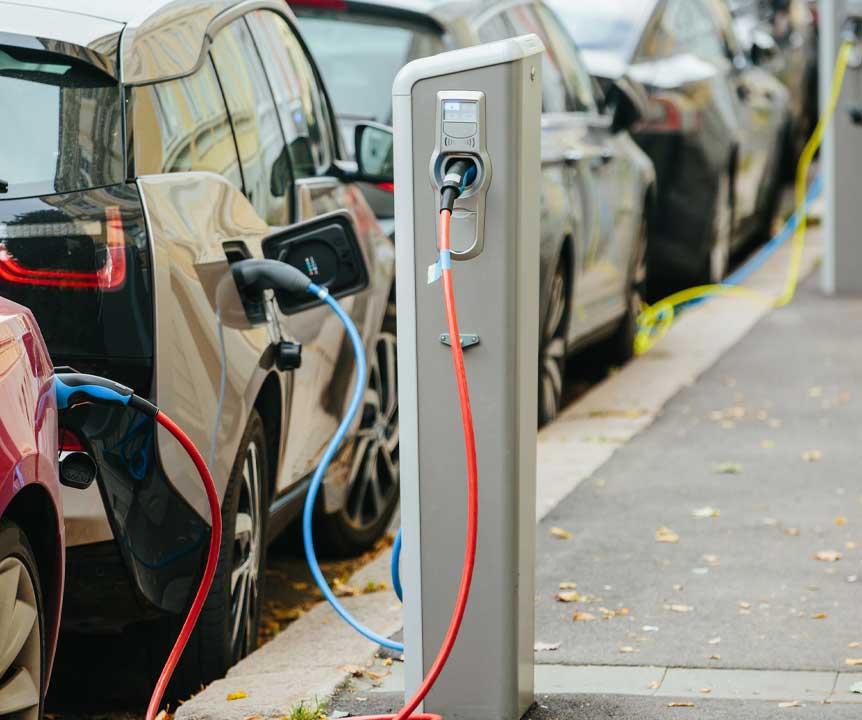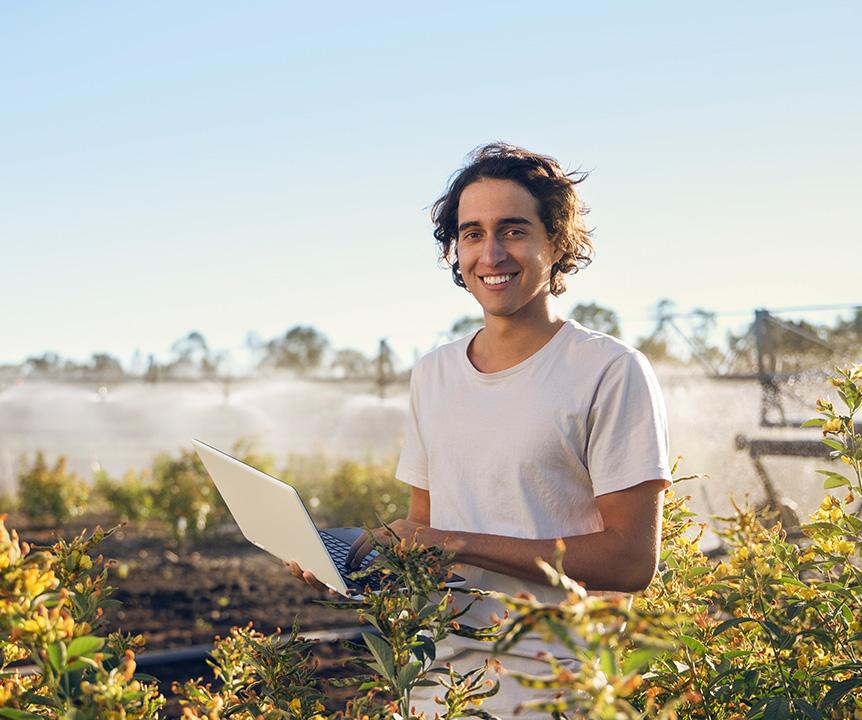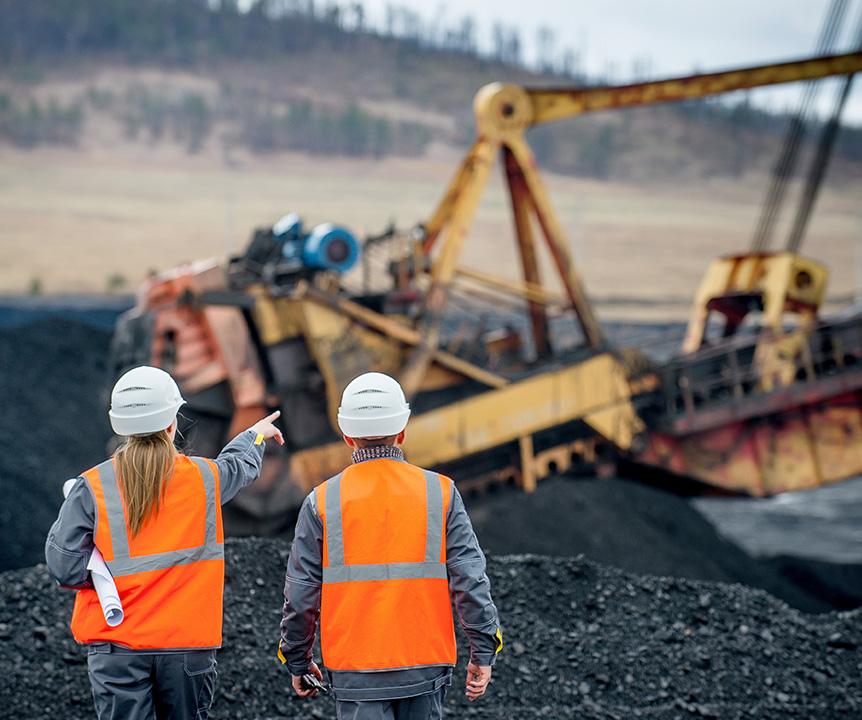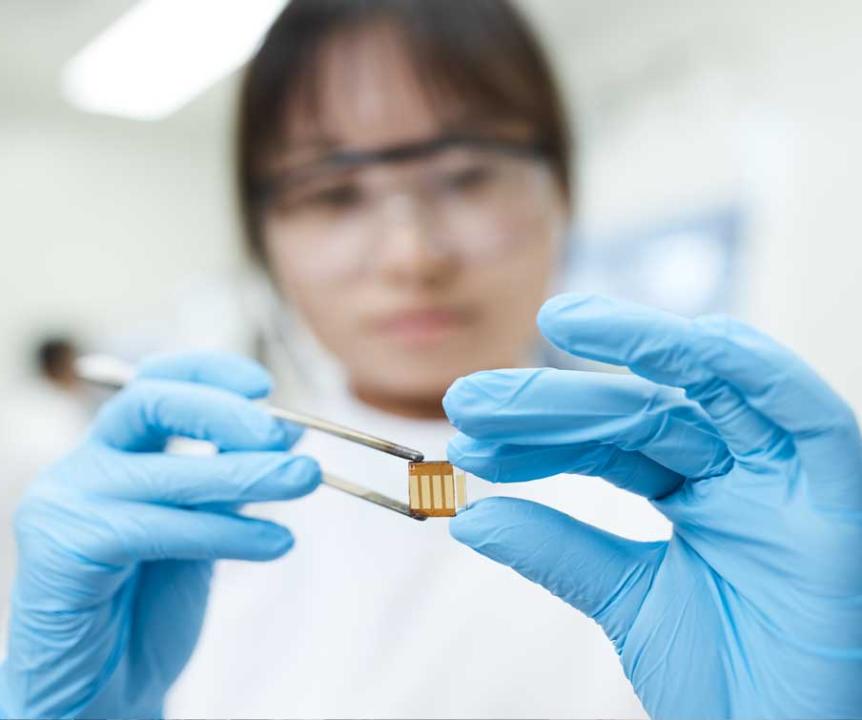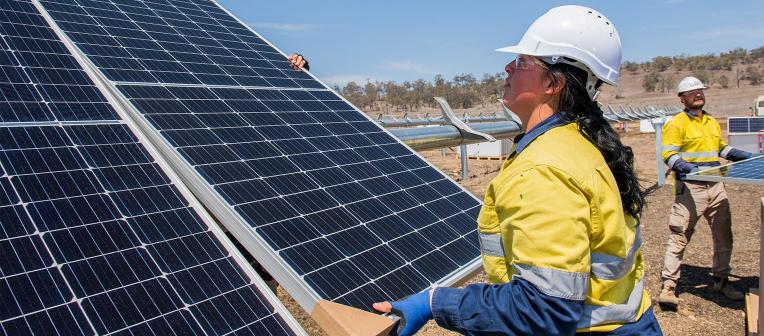
Energy transitions research capabilities and impact
UQ research is making a real impact on how we can meet future Australian and global energy needs and progress sustainable resource development.
What we're working on
Researchers across UQ's faculties and institutes are combining diverse capabilities to explore, understand and address the energy and resource challenges of a changing world.
Capabilities
- Exploring how industries interact, supporting or inhibiting factors, and strategies that enhance co-existence.
- Facilitating transformations of the mining sector as it responds to external changes and global drivers including industrial risk management, systems/process safety engineering and human factors.
- Insights that support the infrastructure sector to make informed and progressive decisions about design, sustainability and future investment.
- Environmental impacts and urban design for smart and resilient built environments.
Impact
- Net Zero Australia study in partnership with Princeton University, the University of Melbourne and management consultancy Nous Group to identify scenario pathways for how Australia can achieve net zero emissions by 2050.
- Establishment of the Infrastructure CoLab to support multi-party innovation by industry to solve complex, non-linear problems in infrastructure delivery for decarbonisation.
- A first-of-its-kind rural economic research collaboration providing insights into pressing issues for rural and regional Queensland, including drought planning, supply chain modelling, rural labour markets and workforces, and local innovation.
- Integrated water and energy design strategies for engaged communities and multifunctional public spaces.
Capabilities
- Context-sensitive exploration of drivers for stakeholder trust and engagement.
- Changing labour markets, workforce development and the creation of new jobs and industries.
- Applying the science of learning to understand and transform training and skills development.
- Social and political challenges including land use, rights, cultural heritage and governance.
Impact
- Developing an online toolkit to assess cumulative socio-economic changes in communities undergoing rapid transitions.
- Identifying organisational resilience and dynamic business environments enabling communities to anticipate and plan for change.
- Supporting industry leaders to respond to increasingly significant environmental, health and well-being, safety and social dimensions of transitions.
- Shared resources for organisations, communities and individuals with an interest in social performance.
Capabilities
- Systems, design and futures thinking for contemporary policy analysis and decision-making.
- Mapping regulatory and market governance changes to improve the operation of markets during transitions.
- Innovation processes, the evolution of value chains and business models.
- Emerging approaches for corporate sustainability, circular economy principles and reporting.
Impact
- Measuring the impact of integrating renewables and storage on market dynamics and estimating the economic cost of the unmanaged exit of coal generation.
- Exploring roles for Queensland’s natural gas in energy transition at home and abroad including energy supply assurance, ESG and decarbonisation.
- Convening global consultations for a United Nations Environment Assembly (UNEA) to strengthen international cooperation on mineral governance, underpinning a new UNEA resolution on ‘Environmental aspects of minerals and metals management’.
- Submissions to Federal and State government and agency consultations relating to research and innovation strategy, policy, funding and governance.
Capabilities
- Unlocking raw materials, including complex orebodies, to meet growing demand.
- Metallurgical engineering, including hydrometallurgy and pyrometallurgy to develop valuable products.
- Minerals processing, including novel separation technologies and innovative processes to maximise efficiencies.
- Mine waste transformation, including characterisation of mine waste, management and unrealised secondary revenue streams.
Impact
- Collaborating with Curtin University, James Cook University and over 30 company partners across Australia to establish a competitive advantage of critical mineral opportunities and shield from supply chain disruptions under the Resources Technology and Critical Minerals Trailblazer.
- Created an industry research consortium integrating coarse particle flotation into processing to reduce energy requirements.
- Developed a global database that highlights supply risk for critical minerals.
- Funding from EU’s Horizon Europe program to improve the accessibility of hyperspectral imaging for extremely high-resolution mapping of rock minerals, plant health, soil water chemistry and more using infrared radiation.
Capabilities
- Advanced materials, including biopolymers, functional nanomaterials and catalysts for energy applications.
- Bioenergy and second-generation biofuel technologies, including alcohol fuel products from bio-electrochemical systems, micro-algal systems and fuels from waste.
- Hydrogen production, storage, utilisation and conversion processes, including electrolysis, fuel cells and methane pyrolysis.
- Batteries and energy storage, including next-generation battery technologies, components and recovery/recycling.
- Natural gas and carbon capture, utilisation and storage (CCUS).
Impact
- Pure Battery Technologies spin-out using new cobalt refining technologies for advanced batteries.
- GrapheneX partnership commitment to build research capacity needed to develop the Green Hydrogen industry in Queensland.
- ARC Centre of Excellence for Green Electrochemical Transformation of Carbon Dioxide.
- Launched the Advanced Materials and Battery Council (AMBC) and inaugural Australia Battery Day.
Systems and supply
Our research is centred around electrification and integration of renewables into the electricity grid, microgrid and energy storage systems and digitalisation.
This includes power system stability, power quality modelling and monitoring, control and operation of power systems, energy management, and data aggregation and analytics.

Capabilities
- Grid integration of renewable energies, including solar PV and wind, and control applications in power engineering.
- Electrical asset condition monitoring and life assessment.
- Energy management, microgrid and cyber physical systems.
- Power data analytics, big data and consumer insights informing network management, intelligence and visualisation.
Impact
- Industry 4.0 Energy TESTLAB: An IoT-enabled digital manifestation of the entire electricity network portfolio for power system analysis, energy management and microgrids, and sector-specific cyber security.
- Advance Queensland Platform Technology Program in collaboration with Redback Technologies to develop a smart energy monitoring platform that will give customers the ability to instantly analyse and control energy consumption.
- ARENA-funded Project SHIELD data toolkit to enable distributors to better manage energy from behind-the-meter assets.
- Energy systems modelling for the NEM and how demand volatility interacts with the gas supply system.

